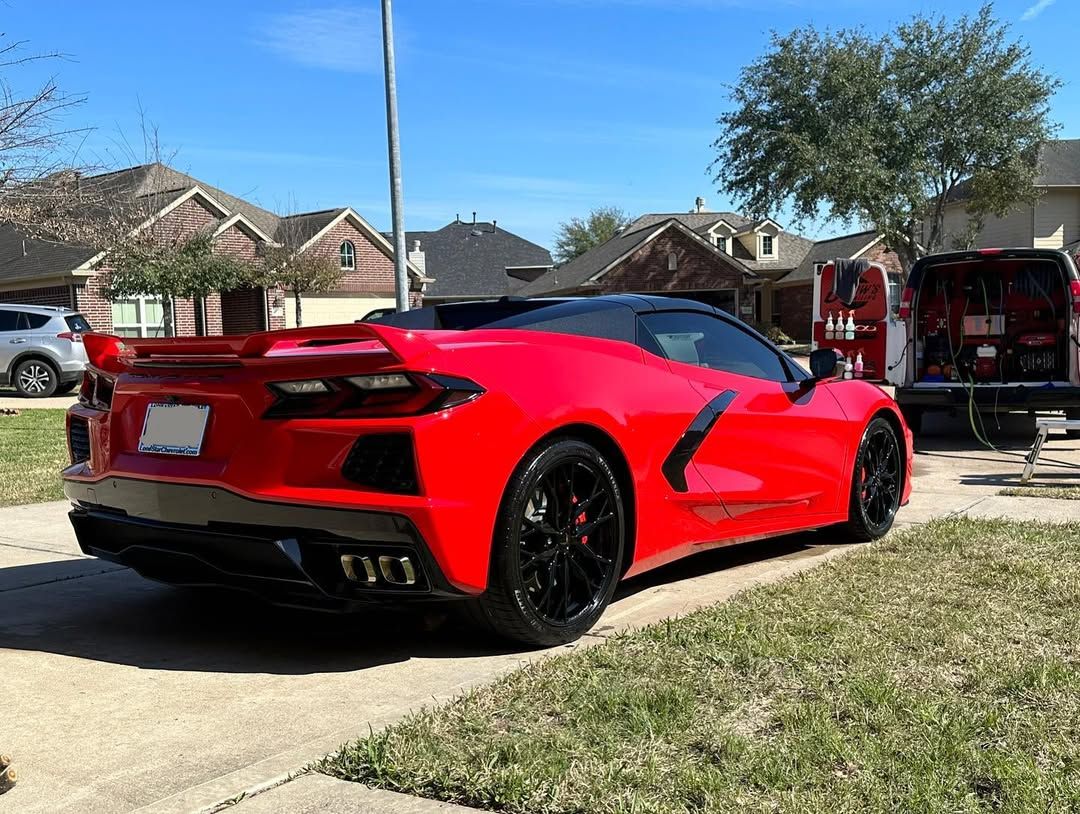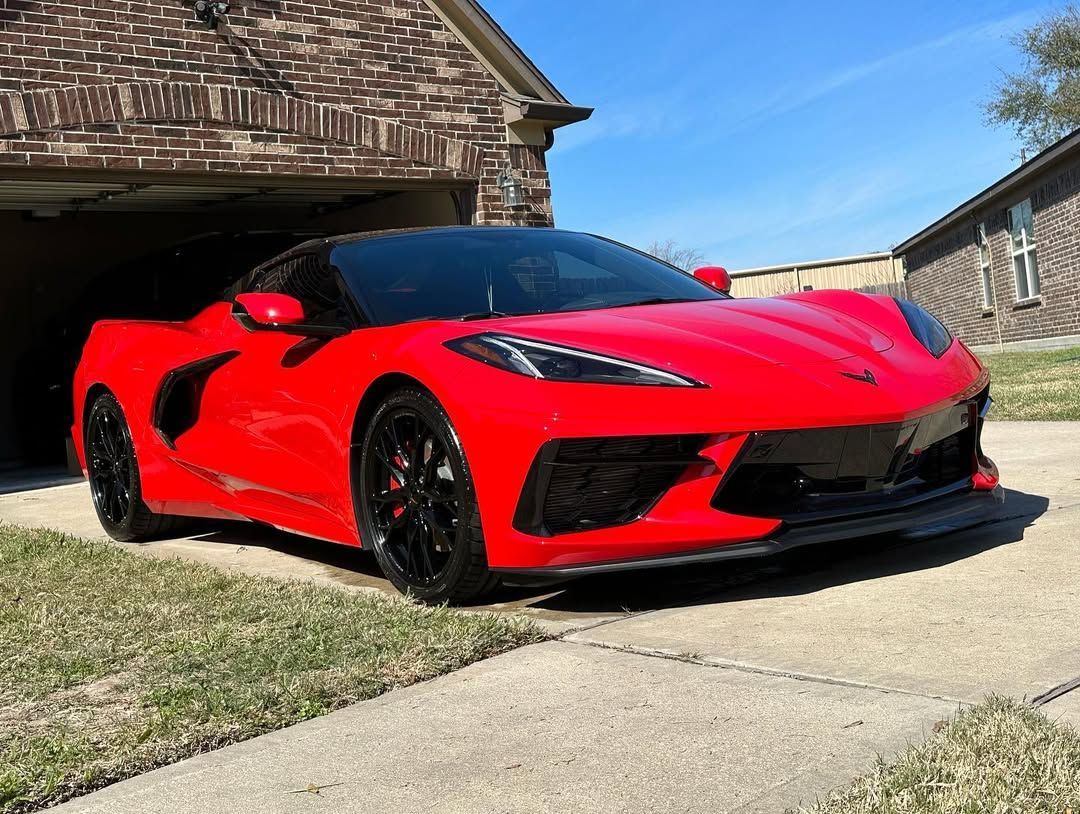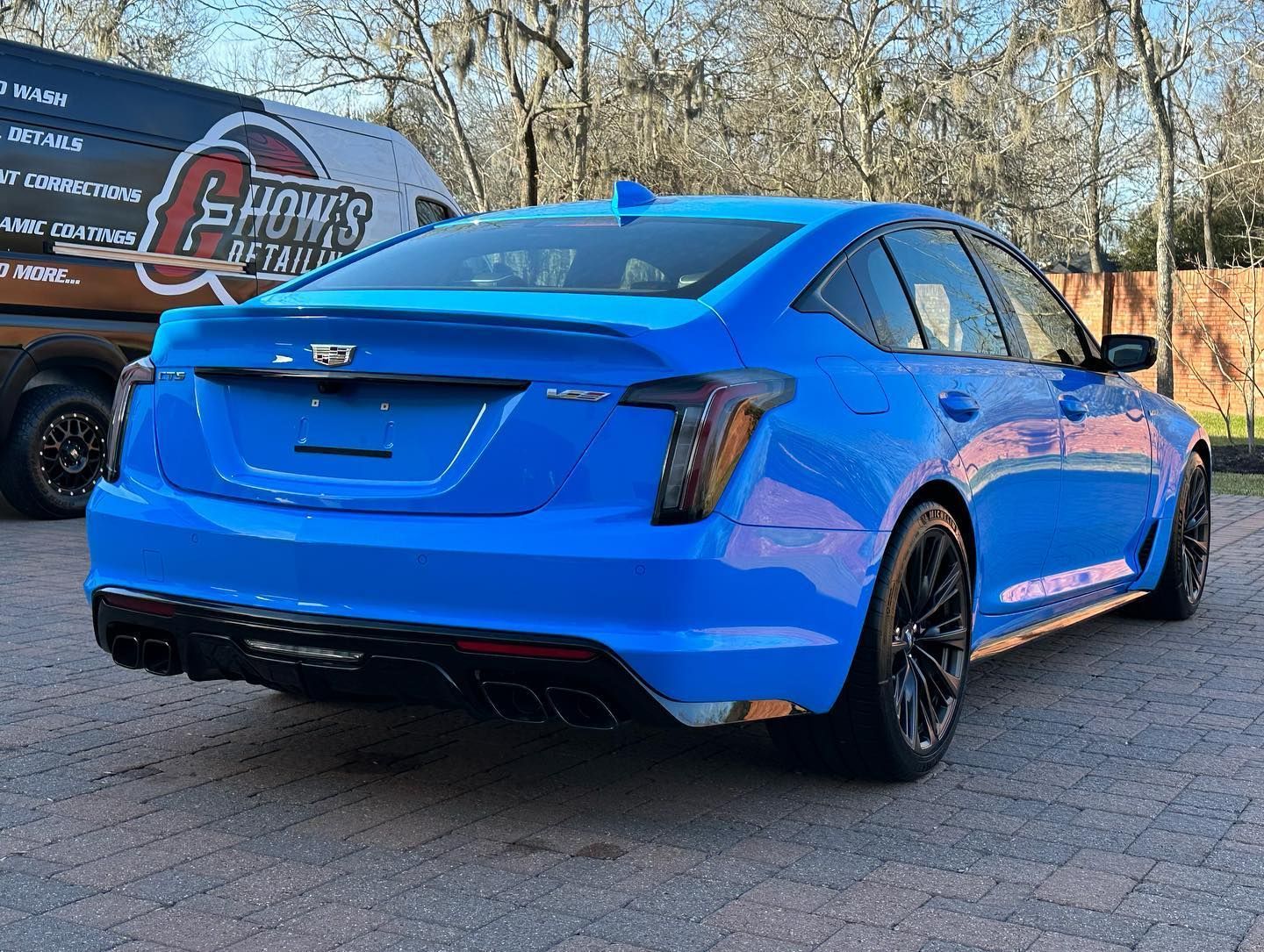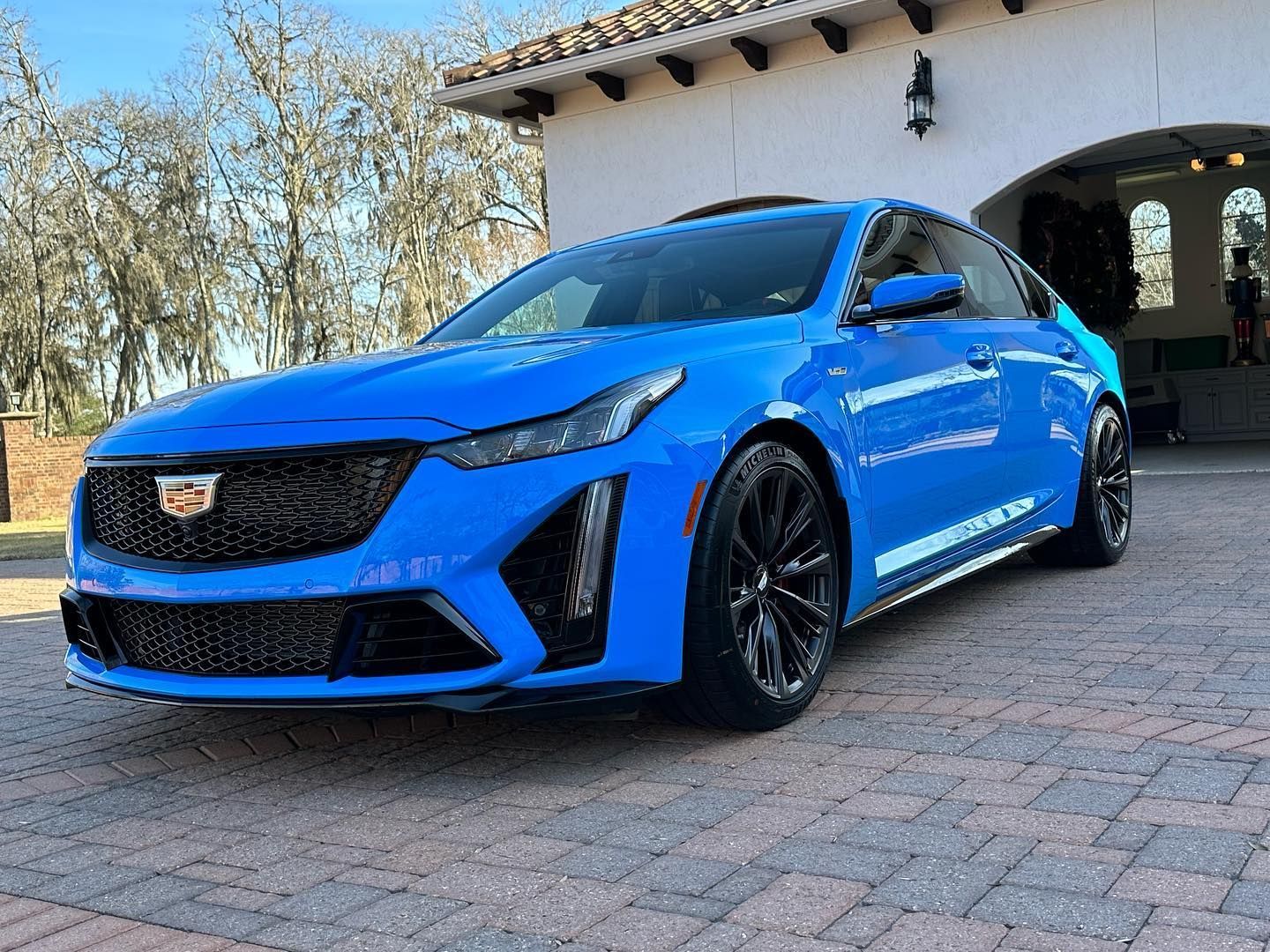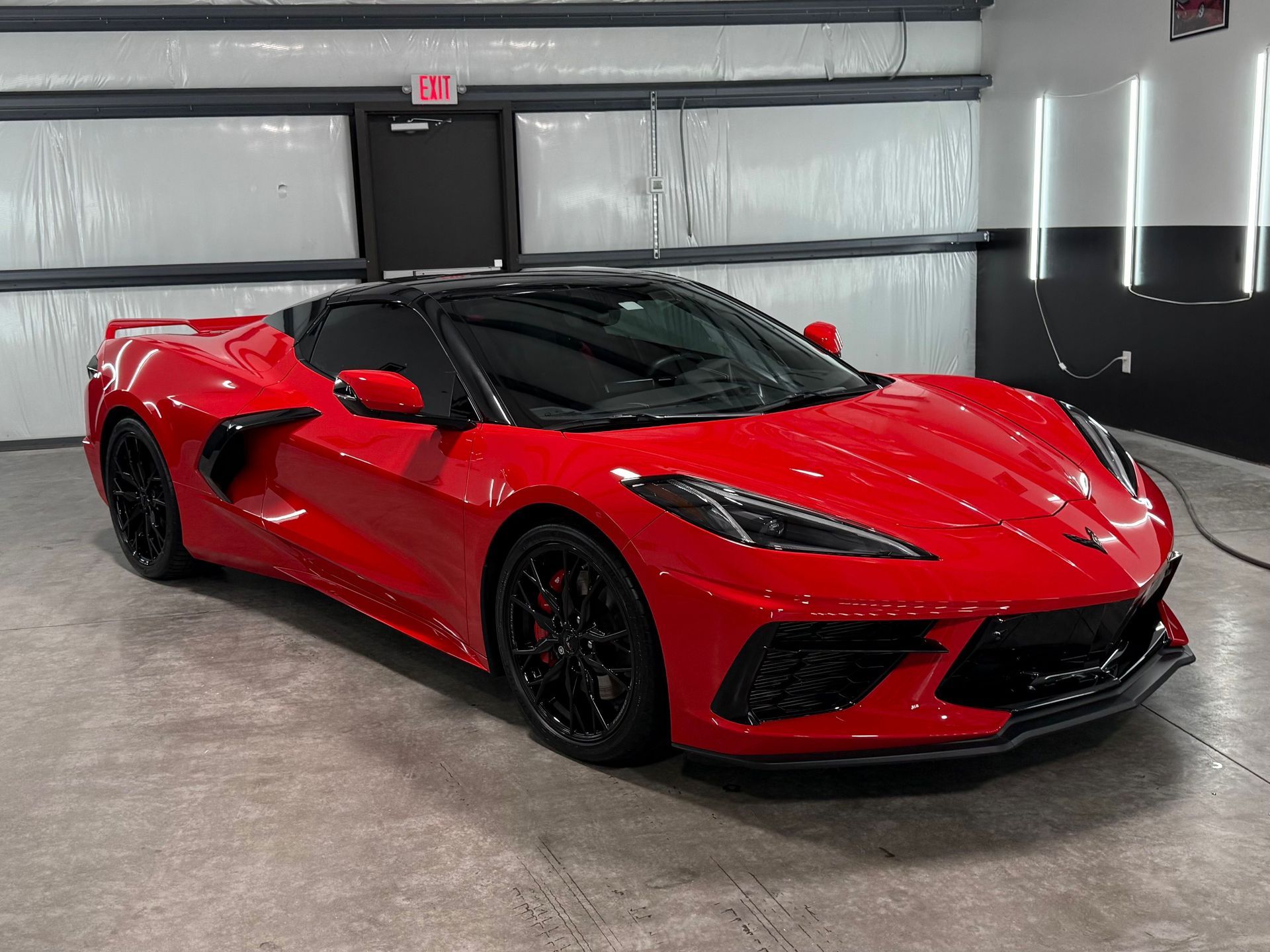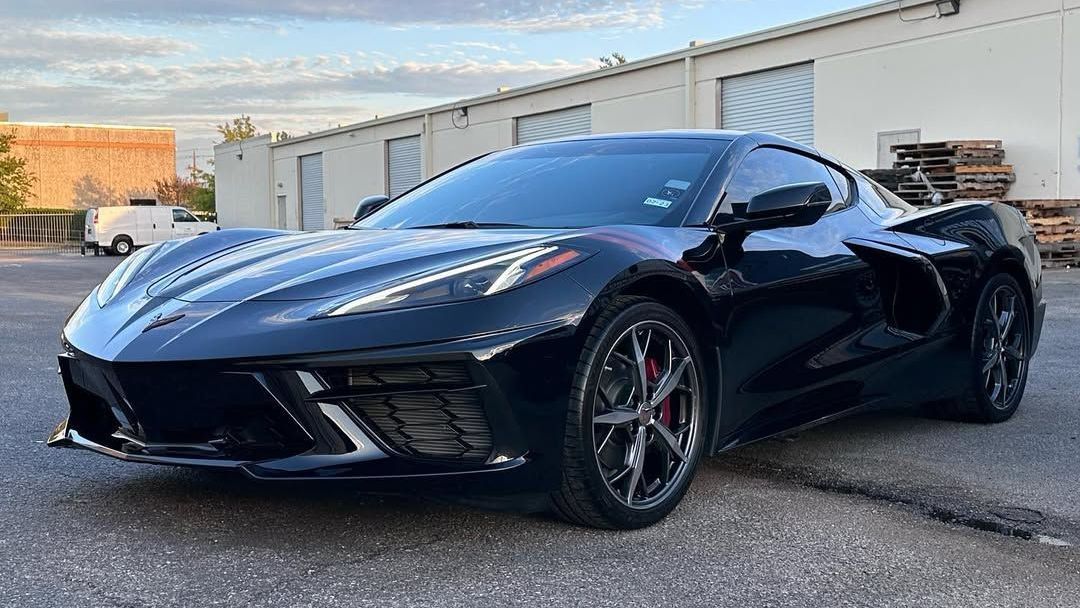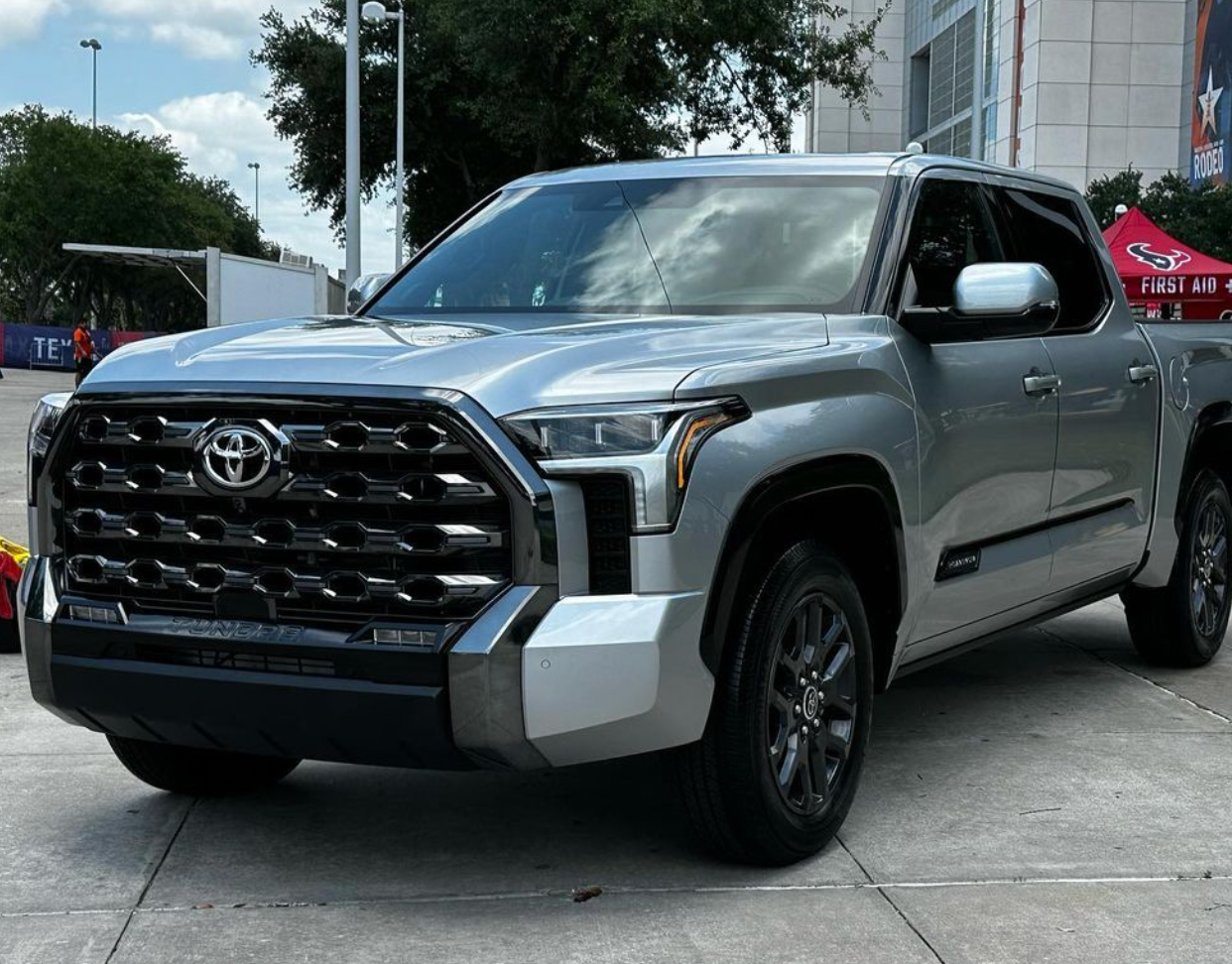How Ceramic Coating Works: Reducing Oxidation and Fading on Your Car
GET A QUOTE NOWCALL (281) 705-3482
If you've ever admired a car that gleams in the sunlight, you might have wondered how it maintains that perfect shine without fading or looking worn out. The secret often lies in a process called ceramic coating. This innovative treatment is like giving your vehicle an invisible suit of armor, shielding it from everyday dangers on the road, such as dirt, UV rays, and even harsh chemicals. In this article, we'll break down exactly how ceramic coating works and why it's becoming a popular choice for car owners who want to protect their investment and keep their vehicle looking fresh for years to come.
Ceramic coating acts as an impermeable barrier, protecting the vehicle's paint by preventing moisture and oxygen from reaching it, thus halting the oxidation process. Additionally, its excellent UV resistance minimizes color fading due to sun exposure, ensuring that your vehicle maintains its aesthetic appeal over time.
What is Ceramic Coating?
Ceramic coating is more than just a thin layer applied to your car's surface—it is a liquid polymer that fundamentally transforms how your vehicle interacts with the environment. Made primarily from silicon dioxide (SiO₂) and sometimes enhanced with titanium dioxide (TiO₂), this innovative product forms a strong chemical bond with the factory paint. Unlike wax or traditional sealants that merely sit on top of the surface, ceramic coating penetrates and integrates with the paint, creating a long-lasting shield against UV rays, oxidation, and various environmental contaminants.
One of the major advantages of ceramic coatings lies in their impressive thickness, typically ranging from 1 to 3 microns. This may sound minimal, but in terms of functionality, it acts as an effective barrier against water spots, dirt accumulation, and harmful substances like bird droppings or tree sap. Imagine your car's paint as skin—ceramic coating doesn't just offer a light lotion on top; rather, it's akin to durable armor deployed for protection. The application process itself demands precision. A high-quality ceramic coating requires meticulous preparation and often involves several layers to achieve maximum durability and effectiveness. Investing time during application translates directly to longer-lasting protection down the road, helping your vehicle look better for longer while retaining its resale value over time.
Protection Against Oxidation
Oxidation is a sneaky process that gradually sabotages the beauty of your vehicle, often starting without you even realizing it. When dust, dirt, and moisture come into contact with your car's surface, they can mix with oxygen, leading to a dull finish that makes your once-glossy coat look tired and worn. Fortunately, ceramic coatings provide an effective defense against this relentless threat by forming a hard layer on top of the paint—a protective shield—sealing it off from the damaging environment. The real magic behind ceramic coatings lies in their composition. Made up mainly of silicon dioxide (SiO₂), these coatings bond chemically with the paint to create a cross-linked structure that repels not just moisture but also the oxygen responsible for oxidation. Without this interaction taking place, your car enjoys enhanced protection against environmental elements that would typically wear down its aesthetics over time.
Cars treated with ceramic coatings significantly outlast those with traditional wax or untreated vehicles. While traditional wax lasts only about a year before signs of oxidation begin to show, ceramic coatings extend this timeframe dramatically, often lasting five years or more before oxidation signs appear. For many car enthusiasts, investing in a professional application of ceramic coating translates into peace of mind and longer-lasting beauty.
UV Rays and Paint Protection
The sun's rays can be relentless, hammering down during hot summer months. Over time, these UV rays lead to gradual degradation of automotive paint, causing it to fade and lose its allure. It's disheartening to think that something as simple as sunlight can diminish the shine of your once-pristine car. Fortunately, this is where ceramic coatings come into play—they are designed specifically to combat these issues. Ceramic coatings are infused with UV-blocking agents that provide a protective barrier against harmful solar radiation, ensuring that the paint doesn't just sit there vulnerable to attacks from the sun but rather fights back. By effectively binding to the vehicle's clear coat, these coatings can block a significant portion of damaging UV rays, helping maintain the vibrant color and gloss of your vehicle.
You might think that parking in shaded areas or using car covers could serve as sufficient alternatives for paint protection. While these tactics may offer some respite, they aren't foolproof. Outdoor conditions vary and aren't always conducive for relying solely on shade or protective coverings. Some shaded areas may not be available when you need them most, and even high-quality car covers can wear over time or fail in severe weather. Essentially, ceramic coatings provide a low-maintenance solution, making them a more dependable choice than temporary fixes. Beyond protecting your car's exterior from fading, ceramic coatings also enhance the overall appearance of your vehicle. A freshly coated car gleams under sunlight like nothing else, bringing out colors in ways that basic wax cannot achieve. The depth of gloss created by ceramic coatings often means you'll keep your paint safe and make it look better than ever.
Chemical Resistance Benefits
Cars face a constant barrage of environmental threats, including bird droppings, tree sap, and road salts, all capable of wreaking havoc on the paintwork. The beauty of ceramic coatings lies in their powerful chemical resistance, which serves as a formidable barrier against these damaging substances. Whether you're parked under a tree or driving down a salt-covered road, this protective layer effectively neutralizes potential hazards before they can inflict damage. Take bird droppings, for instance. While they may seem innocent at first glance, they are notoriously acidic and can etch into your car's paint within hours. With a ceramic coating applied, you gain a protective buffer that helps prevent the immediate etching that an untreated surface would experience. However, it's still wise to make quick cleanups a consistent habit to safeguard your car's finish from any lingering acids.
Chemical threats don't stop at organic matter. Various cleaning agents used at commercial car washes can also be abrasive or corrosive to your vehicle's paint. Many shampoos are loaded with detergents that strip away layers of protective wax and can lead to dullness if not compatible with your finish. Ceramic coatings defend against naturally occurring threats while standing resilient against harsh chemicals typically found in generic cleaning products. Investing in ceramic coating means you've invested in peace of mind. By providing a protective shield around your vehicle's paint, it reduces the risk of wear and tear caused by environmental factors and chemical exposure alike. This makes maintenance easier and ensures that when there is a mess—be it tree sap from a relaxing afternoon or a sudden splattering from above—it wipes off smoothly without damaging the integrity of your vehicle's paint job.
Maintaining a Glossy Finish
Ceramic coatings are not just a one-and-done application; they require ongoing, thoughtful care to maximize their benefits and maintain that pristine appearance. The hydrophobic surface created by these coatings does an excellent job of repelling water and contaminants, but keeping that showroom shine requires attention to routine cleaning regimens. Regular maintenance—including washing frequency, choice of cleaning products, and drying techniques—will help retain the coating's integrity while ensuring your car looks its absolute best. A good practice is to wash your vehicle every one to two weeks using a pH-neutral car shampoo. This prevents harmful particles from bonding to the surface and potentially degrading the ceramic coating. When picking a soap, look for something specifically labeled as pH-neutral, ideally in the range of 7-8. Harsh or abrasive cleansers can quickly cut through the protective coating, reducing its effectiveness.
After washing, drying becomes equally important. High-quality microfiber towels will ensure that you minimize the risk of damaging the surface. Gently pat or wipe the vehicle dry, taking care not to apply unnecessary pressure. Patience is key—rushing through this process can detract from that glossy finish you've worked so hard to achieve. With proper maintenance, dirt and grime will slide off more effortlessly due to the hydrophobic properties. The reflective nature of ceramic coatings amplifies color depth, bringing out richer hues in paint. Regular upkeep ensures that the shine doesn't fade, with many users reporting a sustained glossy appearance with less frequent detailing.
Additionally, applying a ceramic-specific detailing spray every one to three months can significantly enhance both gloss and hydrophobic capabilities. This type of spray fills in any minor imperfections and reinforces the protective barrier established by the coating without being abrasive. It's also vital to avoid automatic car washes that utilize brushes, as these may create damage that compromises your meticulously maintained finish.
Application and Durability
When it comes to applying ceramic coatings, preparation is the cornerstone of success. Ensuring a pristine surface is crucial before considering the application of that protective layer. This means washing your vehicle thoroughly to remove dirt and grime, followed by a clay bar treatment to eliminate any stubborn contaminants that might be lurking on the surface. Many car enthusiasts also opt for polishing at this stage, as it helps smooth out imperfections, setting a flawless foundation for the ceramic coating. Proper surface preparation ensures that any dirt or blemish won't become trapped under the coating, which would reduce its durability and effectiveness. Once you've spent time prepping the surface, the application process begins.
Using an applicator pad to apply the coating requires a bit of finesse. Working in small sections of your car at a time allows for finer control and ensures an even distribution. After applying, it is critical to allow the coating to sit for roughly three to five minutes before buffing with a microfiber towel. This step effectively removes excess product while ensuring that a uniform bond forms between the coat and the paint. The curing process directly influences your coating's bond with the vehicle's surface. Ideally, keeping your car away from moisture for 24 to 48 hours allows the ceramic particles enough time to really grip onto your car's paintwork. Giving your coating ample curing time significantly enhances its effectiveness against elements like UV rays, water spots, and environmental pollutants. Professional detailers often use infrared curing methods to expedite this process without sacrificing results, producing an ultra-durable finish faster than traditional methods.
Comparing with Wax and Sealants
When you think about protecting your vehicle's paint, traditional options such as waxes and sealants come to mind. They each serve a purpose, but when it comes to long-term protection, they simply can't keep pace with ceramic coatings. Traditional waxes typically require reapplication every one to three months, meaning constant upkeep is necessary to keep your car looking pristine. Ceramic coatings, on the other hand, can last anywhere from six months to five years depending on the product used and care taken after application. This drastically reduces the frequency of touch-ups needed, saving time while knowing your vehicle is consistently safeguarded.
When it comes to protection levels, ceramic coatings truly shine. While waxes create a superficial layer over your vehicle's paint, they fail to bond chemically with it. This lack of bonding means they can easily wear away under harsher conditions. Conversely, ceramic coatings bond at the molecular level, providing a robust defense that protects and enhances your paint's appearance. Every time it rains or snow falls, your car has an additional layer against both water damage and unsightly contaminants. Waxes are generally effective against light rain and general dirt but quickly lose their effectiveness against more severe elements like UV rays or harsh chemicals commonly found in parking lots or at car washes. Ceramic coatings provide superior resistance, acting as a shield against these adversities while ensuring that everyday road grime doesn't stick easily to the surface.
If you park your car outside often or encounter high pollen counts during certain seasons, the hydrophobic properties of ceramic coating significantly help in keeping the vehicle cleaner for longer periods compared to traditional options. While waxes may continue to hold value for some detailing enthusiasts who relish regular maintenance rituals, ceramic coatings leverage technology for both efficiency and effectiveness in protecting one of your most significant investments—your vehicle.
Trusted Ceramic Coating Services in Houston, TX
At Chow’s Detailing, we specialize in delivering
premium ceramic coating services in Houston, TX, designed to keep your vehicle shining with unmatched protection and clarity. Our expert team applies advanced coatings that guard against UV rays, oxidation, and daily wear while giving your car a sleek, long-lasting finish. Whether you drive a luxury sedan, a high-performance sports car, or a trusted daily driver, we provide tailored solutions to preserve your investment and simplify maintenance.
Schedule your ceramic coating appointment today
and enjoy a shine that stays strong mile after mile!

